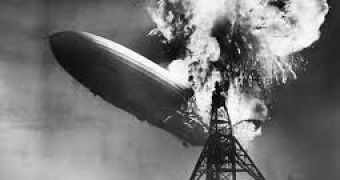Back in 1937 (on May 6, to be more precise), the German passenger airship LZ 129 Hindenburg caught fire and got blown to smithereens while trying to dock at the Lakehurst Naval Air Station. The incident translated into the death of 35 people, both passengers and crew members.
Recent news on this topic says that, roughly 76 years after this catastrophe took place, researchers finally managed to pin down the most likely cause for this historic accident.
Long story short: the specialists who took the time to investigate this issue maintain that the airship somehow flew into a thunderstorm, the result being that it got charged with static electricity.
Furthermore, they believe that either a broken wire or a sticking valve kept leaking hydrogen into the airship's ventilation shafts, and that once the hydrogen leaking at the tail of the ship became acquainted with a spark caused by the static electricity the explosion took place.
Daily Mail quotes airship historian Dan Grossman, who made a case of how, “I think you had massive distribution of hydrogen throughout the aft half of the ship; you had an ignition source pull down into the ship, and that whole back portion of the ship went up almost at once.”
In order to reach these conclusions concerning what caused the Hindenburg disaster, Jem Stansfield, a British aeronautical engineer, and several others specialists went through the trouble of collecting and analyzing as many eyewitness reports as possible.
By the looks of it, this allowed them to piece together various scenarios which involved the use of scale models of this airship and which allowed them to rule out the idea that the Hindenburg disaster was not so much an accident as it was the result of a terrorist attack.
A full documentary concerning the Hindenburg catastrophe and its being caused by static electricity is to be aired on Channel 4 in Britain this coming Thursday.

 14 DAY TRIAL //
14 DAY TRIAL //